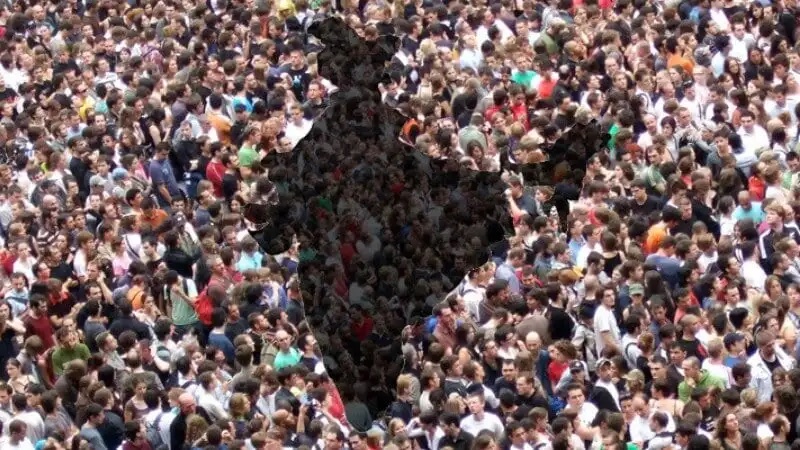Data is the new gold. Data is required to identify problems, frame policies, recognise beneficiaries and deliver solutions to them. Over the last three decades, societies across the globe have made tremendous progress in improving the processes of gathering, analysing and using data. This has improved social welfare efforts by government and other entities.
July 11 is observed as World Population Day across the globe. The day is aimed at highlighting issues related to population. The day is apt for highlighting the importance of conducting a population census, and the consequences of delaying it.
India conducts census every 10 years. The last census was supposed to occur in the year 2021. However, because of the COVID-19 pandemic, it was delayed. Now, however, there is no reason to delay, however the government is dragging its feet, probably looking to delay it even further. Let us see why that might be the case?
What is Population Census?
A population Census is the process of collecting, compiling, analysing and disseminating demographic, social, cultural and economic data relating to all the persons residing in the country, at a particular time in ten years interval.
Many countries in the world, including India, have constitutional provisions that require the conduct of a population census at regular intervals. It is essential to conduct population census because it provides the government with accurate and comprehensive data on various demographic, social, and economic aspects of its population. This serves as a fundamental data source for evidence-based policymaking, governance, and public administration.
What are the benefits of Population Census?
1. Policy planning and decision-making
The Census data helps the policymakers and those in position of power with by providing them accurate and reliable information about the population, enabling them to formulate effective policies, allocate resources, and plan for various sectors such as education, healthcare, infrastructure, and social welfare.
2. Resource allocation
Through census, the policymakers can identify the marginalised and vulnerable sections of the society. Once they are identified, the government can conduct equitable distribution of resources and services based on population size and demographic characteristics. Thus, the census data assists in determining the allocation of funds for public services like schools, hospitals, roads, and other essential facilities.
3. Socioeconomic analysis
Census data helps the researchers, academics, and analysts in studying demographic trends, population distribution, migration patterns, and socioeconomic characteristics. It helps in understanding social dynamics, identifying disparities, and developing strategies to address social and economic issues.
4. Electoral representation
Census data plays a critical role in determining the number of seats and boundaries for electoral constituencies. It ensures fair representation and proportional allocation of political power based on population size and distribution, thus providing the country with a fair democratic government.
5. Monitoring population changes
Regular population censuses provide a comprehensive and up-to-date snapshot of the population of a nation. They help in monitoring changes in population growth, fertility rates, mortality rates, migration trends, and other demographic indicators over time.
Why is the census being delayed?
India is a democracy which means that the government is elected by a majority of its citizens with the broad principle of ‘one citizen-one vote-one value’. The number of seats in the Lok Sabha based on the 1951, 1961 and 1971 Census was fixed at 494, 522 and 543, when the population was 36.1, 43.9 and 54.8 crore respectively. However, it has been frozen as per the 1971 Census in order to encourage population control measures so that States with higher population growth do not end up having higher number of seats. This was done through the 42nd Amendment Act till the year 2000 and was extended by the 84th Amendment Act till 2026. Therefore, the population based on which the number of seats is allocated refers to the population as per the 1971 Census. This number will be re-adjusted based on the first Census after 2026.
In a normal course of events, the delimitation process for the number of seats, boundaries of territorial constituencies and determining the reserved seats for SC and ST would have happened based on the Census of 2031 as it would have been the first Census after 2026. However, since the 2021 Census has already been delayed, and the fact that the year 2026 is only 2 years away, there have been talks about delaying the process of census to conduct the impending delimitation exercise at the earliest possible opportunity.
The political stand
The central idea behind conducting a delimitation exercise is to ensure that every state has equitable representation in the Lok Sabha based on its population. As we consider the formula worked out for delimitation, It is important to understand that seats for some states might fall and for some states, it might increase. If the seats are allocated according to the projected population figures in 2026, Uttar Pradesh will gain an estimated 14 seats and the constituencies in Madhya Pradesh will rise from 29 to 34. However, Tamil Nadu will observe its number of constituencies fall from 39 to 30 and Kerala’s constituencies will drop from 20 to 14. Given that the current incumbent BJP’s strength is in the Hindi belt, the Opposition parties are concerned that delimitation may end up benefitting the party, which is why they are keen on delaying census even further.


